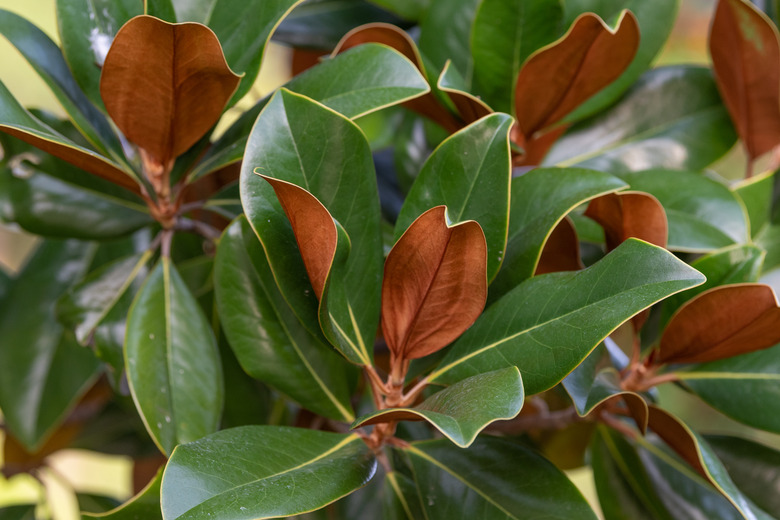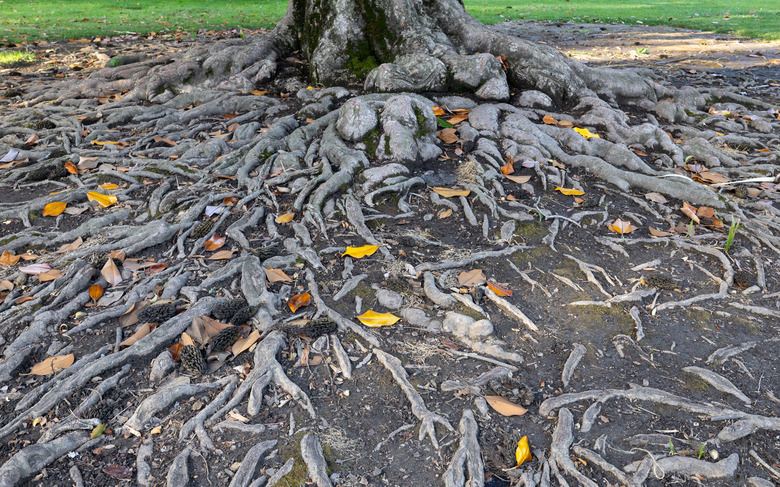How To Transplant A Magnolia Tree
Transplanting a magnolia tree is notoriously difficult, because its roots can spread far beyond the tree's canopy. But if your magnolia (Magnolia, spp.) is still a young tree and you have time to plan ahead and take precautions, you may be successful.
There are multiple species in the Magnolia genus; among the most common are the Southern magnolia (M. grandiflora; USDA zones 7 to 9) and star magnolia (M. stellata; zones 5 to 9).
When to Transplant a Magnolia Tree
Transplant magnolia seedlings or trees in the fall before the first frost or in the spring. If you live in the colder parts of its zone, spring is preferred, so it won't have to endure a very cold winter after transplanting.
Preparing a Magnolia Tree for Transplanting
First, measure your tree's diameter at chest height. If it's more than 4 inches in diameter, understand that it may not survive if you dig it out and transplant it. If your magnolia is larger and it's just in a bad spot, you may have to simply remove, since you likely won't be able to transplant it successfully.
Ideally, you should root prune your tree six months or even up to a year before transplanting. So, if you plan to transplant it in the fall, root prune it in the spring. If you are going for a spring transplanting time, root prune it in the fall.
What Is Root Pruning?
Root pruning does just that: It prunes the roots, with the goal that they will grow back within a more confined space. Using a sharp shovel or spade, sink it in a circle around your tree at least 12 inches from the trunk, depending on the size of the tree. This should encourage new root growth inside the cut area.
Digging Out the Tree
On transplanting day, gather your tools before starting. You'll need a shovel, a sharp spade or garden knife, and a tarp or large piece of burlap.
- Tie up the branches. Use twine or string to tie up your tree's branches carefully, so they are not in your way while digging. While you're at it, mark the north side of the tree, because you will want to retain this orientation when you transplant.
- Dig the new hole. Select a location that is in full or partial shade with well-draining soil. Dig a hole twice as wide as the magnolia's root ball. Avoid digging it too deeply, as you want the tree to be situated at the same level as it was in its original hole.
- Dig out the tree. Dig a trench around the tree where you root pruned earlier. A magnolia tree has fairly shallow roots, so you likely won't need to dig too deeply, perhaps just 1 foot or 18 inches. Pull out the tree and lay it on its side on a tarp or piece of burlap. If the tree is still connected, sever any roots with a sharp spade or garden knife.
Though magnolias have fairly shallow roots, they can extend outward up to 40 feet.
Replanting the Tree
Root balls are heavy. If you are moving it to a different location in your yard, you can likely drag the tarp with the root ball to your new hole. If, instead, you're moving it to an entirely new location, you may enlist help to lift it into a vehicle.
Ease the tree into its new hole; then backfill it with native soil after having removed soil clods or rocks. Water thoroughly. Experts recommend adding 2 or 3 inches of mulch around the trunk, but don't let it come into contact with the tree itself. Mulch helps deter weeds and maintain moisture.
After-Transplant Care
Monitor the tree's moisture level regularly, as newly transplanted trees or shrubs need a lot of water to ensure the roots stay moist while they are adding new growth.
Fertilize only after the tree has put out new growth, so you know it's established. Start with 1 cup of a balanced fertilizer, such as 8-8-8 or 10-10-10, and spread it around the hole in early spring, late spring and mid-summer. Increase the amount of fertilizer each year after transplanting: 2 cups in the second year and 4 cups in the third year. After that, it should be able to get its nutrients on its own.

